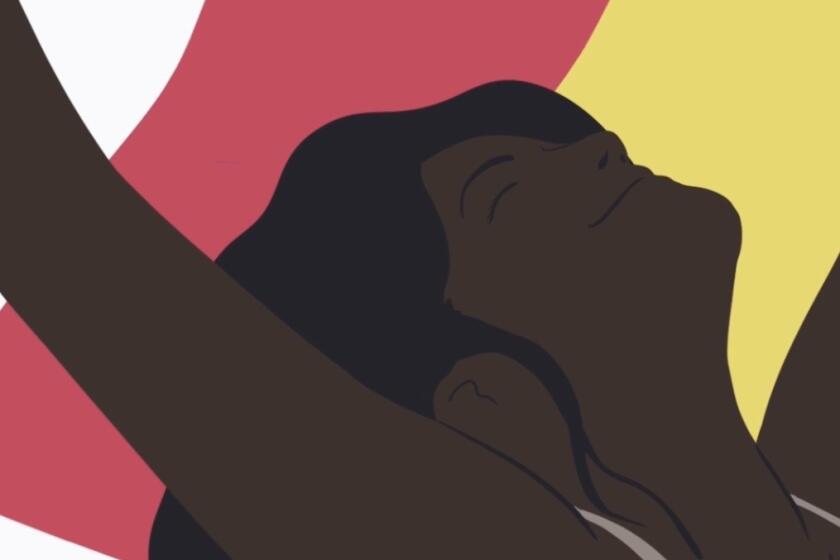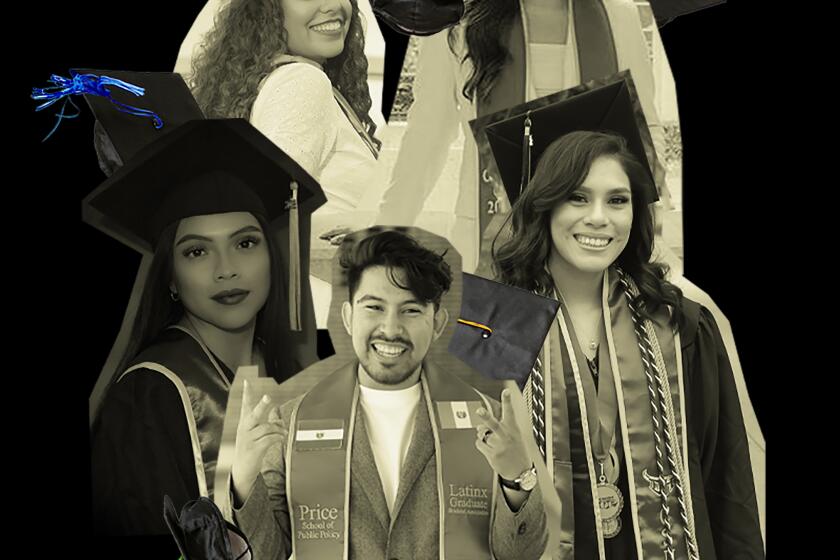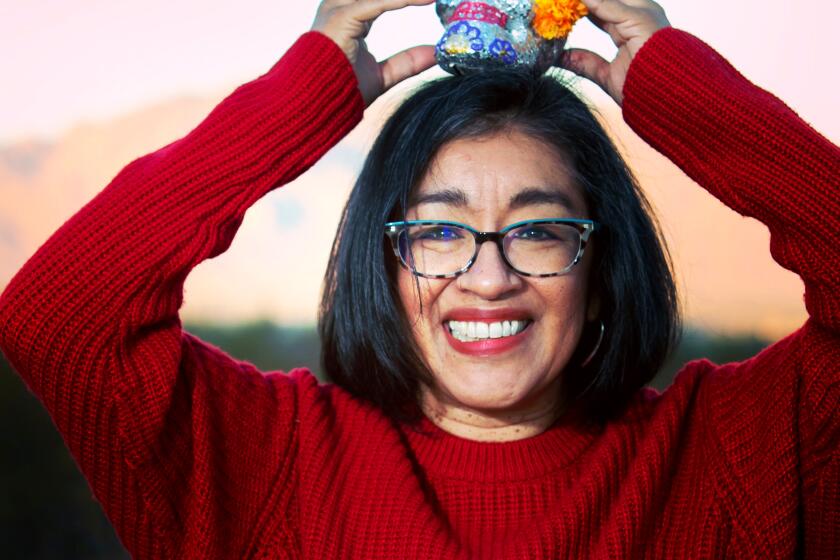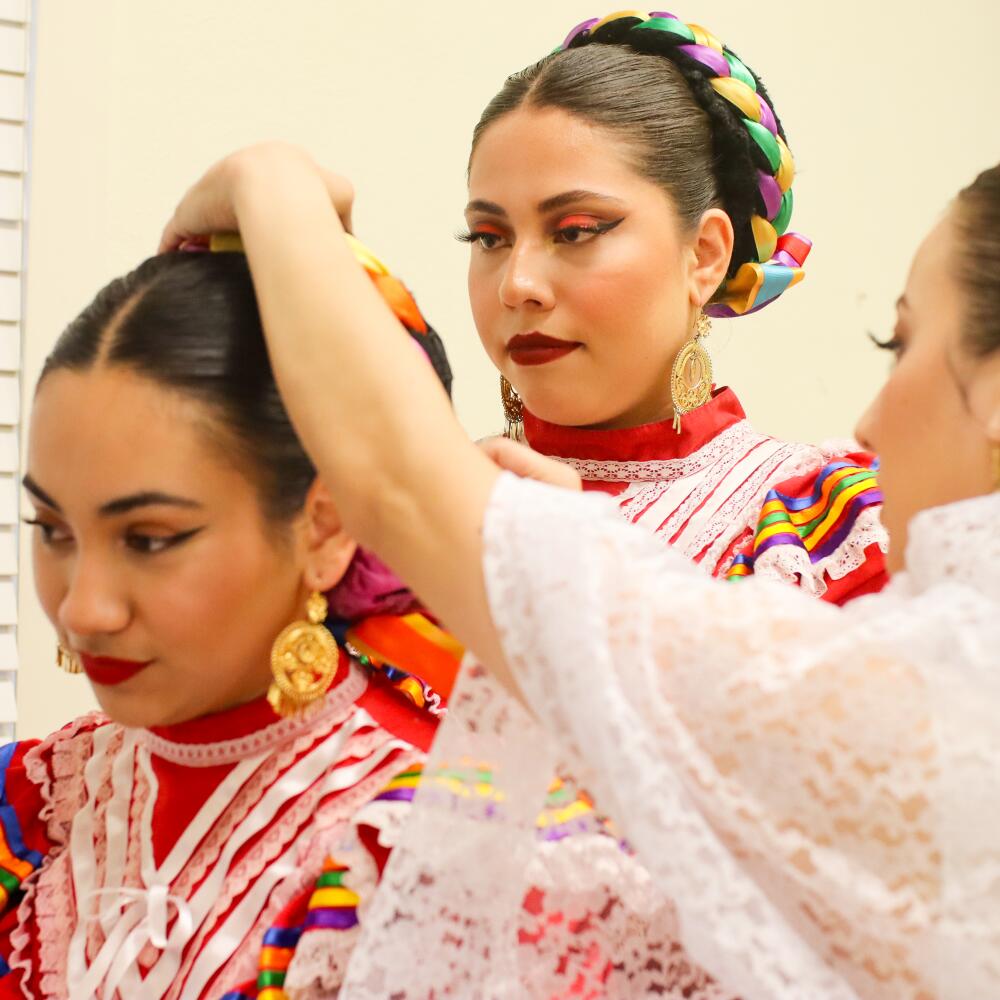
Alondra Ordaz and other women from the Grupo Folklórico Mexica squeeze into the cramped teachers’ lounge at Minnie Gant Elementary in Long Beach, their makeshift dressing room for the day.
They step into bright, colorful skirts, drape white lace shawls over their shoulders and take turns putting on different shades of red lipstick. With delicate hands, Ordaz helps place the braided yarn and ribbon tocados on their slicked-back hair, pinning everything in place.
It’s 5 p.m. on a Friday and school is out but a crowd of students, parents and educators is beginning to swell outside at the school’s Latinx Heritage Month celebration.
Los Angeles poet Yesika Salgado curates the first De Los Latino poetry series where poets explore the theme of belonging.
One by one, the women walk out onto the blacktop toward the crowd, heads held high. The whispers of little girls in awe of the Disney princess lookalikes are drowned out by powerful gritos of encouragement and the sound of the zapateado before “El son de La Negra” begins to play.
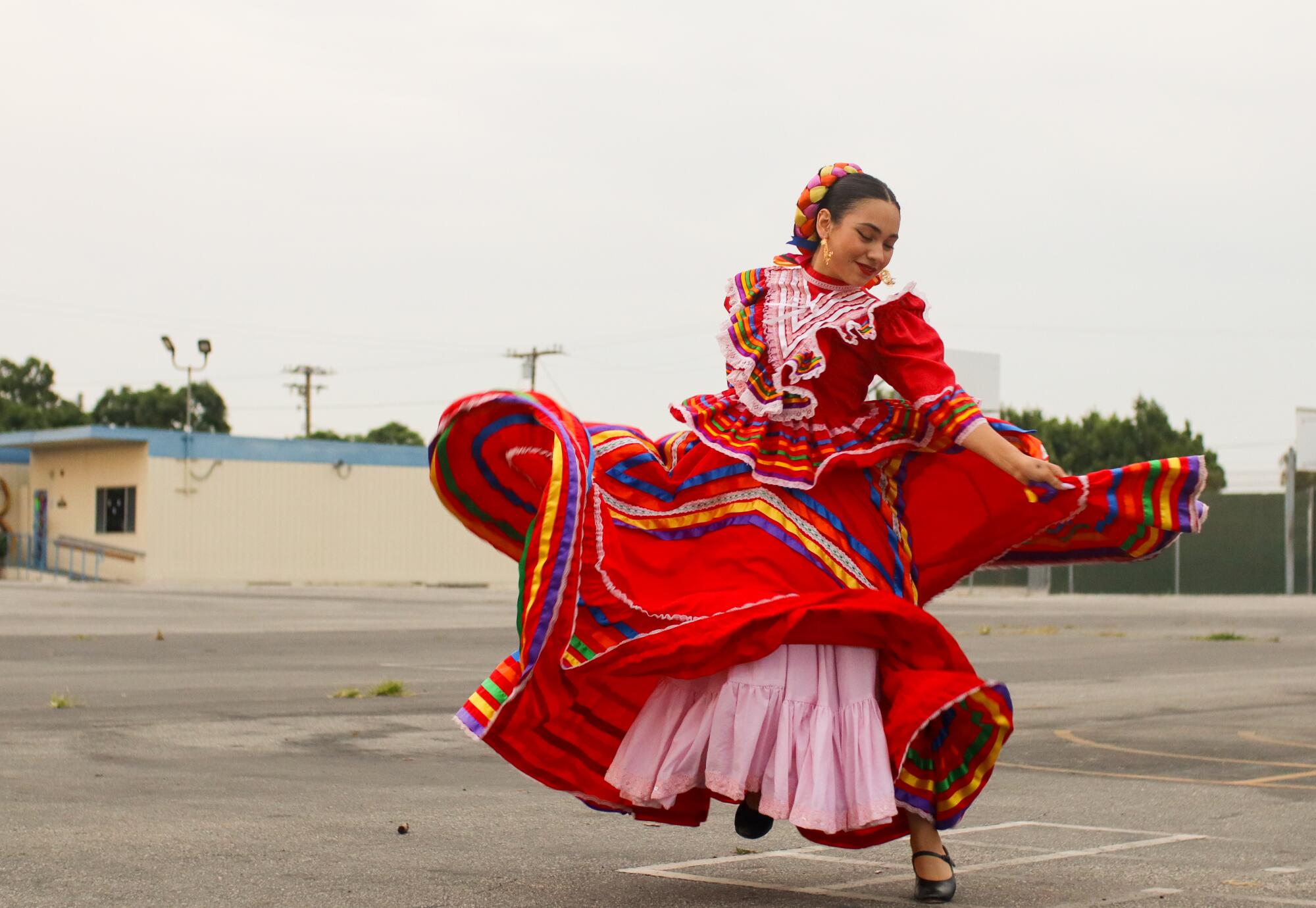
Ordaz is president of the Grupo Folklórico Mexica at Cal State Long Beach, a cultural dance group that teaches traditional dances from the various regions of Mexico. While she wears this title proudly, she never realized the effect her dancing would have on her sense of identity.
At age 2, Ordaz moved with her mother to the U.S. from Purépero, Mexico, to reunite with her father in Moreno Valley. Here, she was teased for not knowing English and grew up with a distant memory of what her home country was like. She remembers the feeling in third grade, when her older cousin dragged her to dance folklórico at church.
Many students are embarking on an exciting yet unfamiliar journey: their first year of college. There are particular challenges for first-generation students.
“Once I stepped into the dance room, it was like being transported into México. Everyone was speaking Spanish. The songs were in Spanish, the dresses looked like the ones from México. That’s what I knew México was,” said Ordaz.
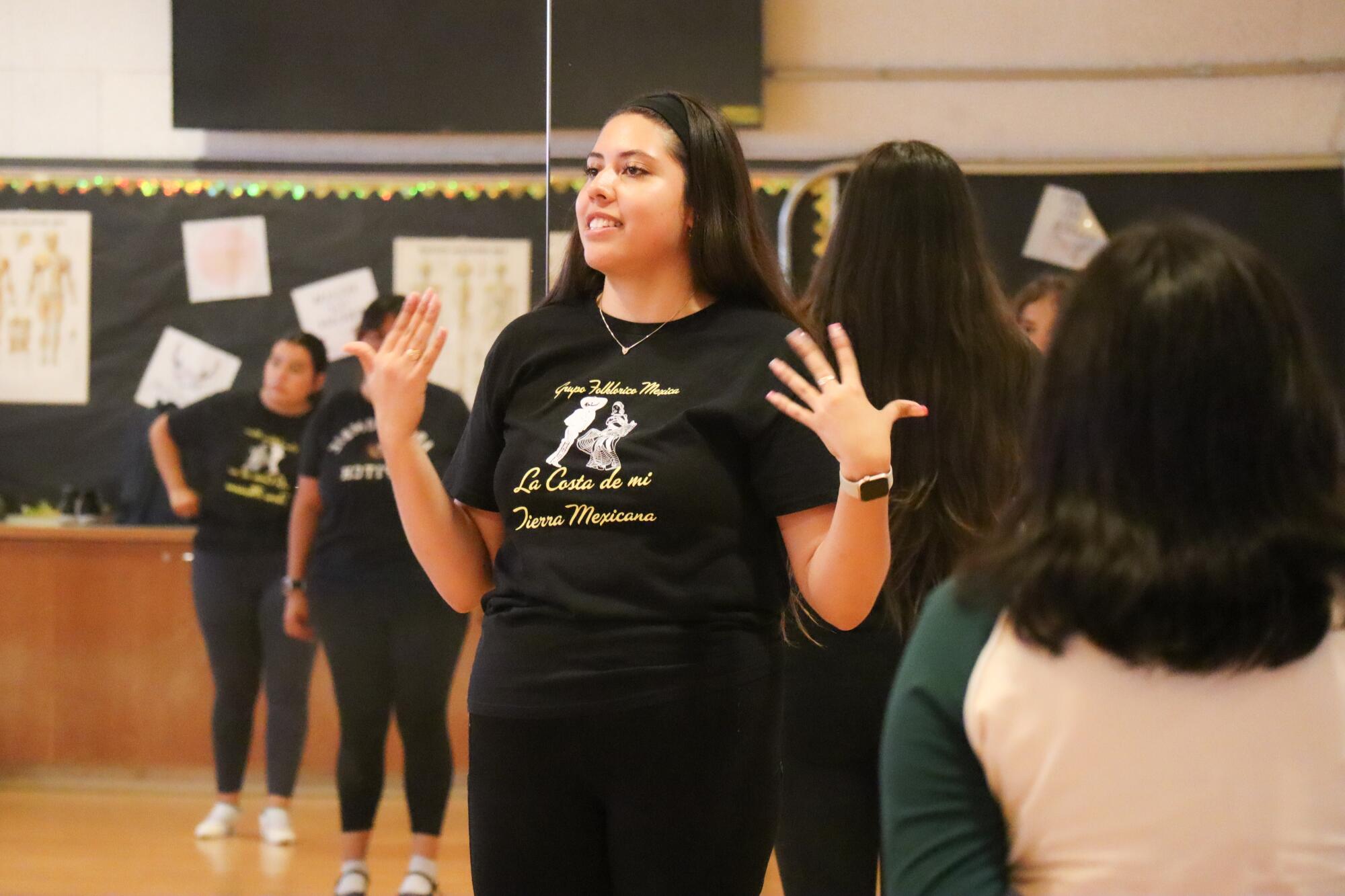
Similar to the many first-generation Latinos who have spent most of their lives in the U.S., Ordaz felt disconnected from her roots. She found herself searching for ways to understand her culture, traditions and relate to a country she knew very little about.
Now 21, Ordaz and the club’s student leaders teach baile folklórico to more than 25 students on campus twice a week. Under the hot sun in a concrete courtyard, they go over basic techniques such as zapateados and faldeos, and learn how the songs and dances differ across various regions in Mexico. For Ordaz, it’s been the answer to understanding more about her cultural identity and helping others to do the same.
“Folklórico has helped me find community by being able to share the space with other dancers who grew up with the same traditions as me,” Ordaz said. “[I’m] being surrounded [by] this environment where everyone is trying to learn more about their culture and is passionate about their roots.”
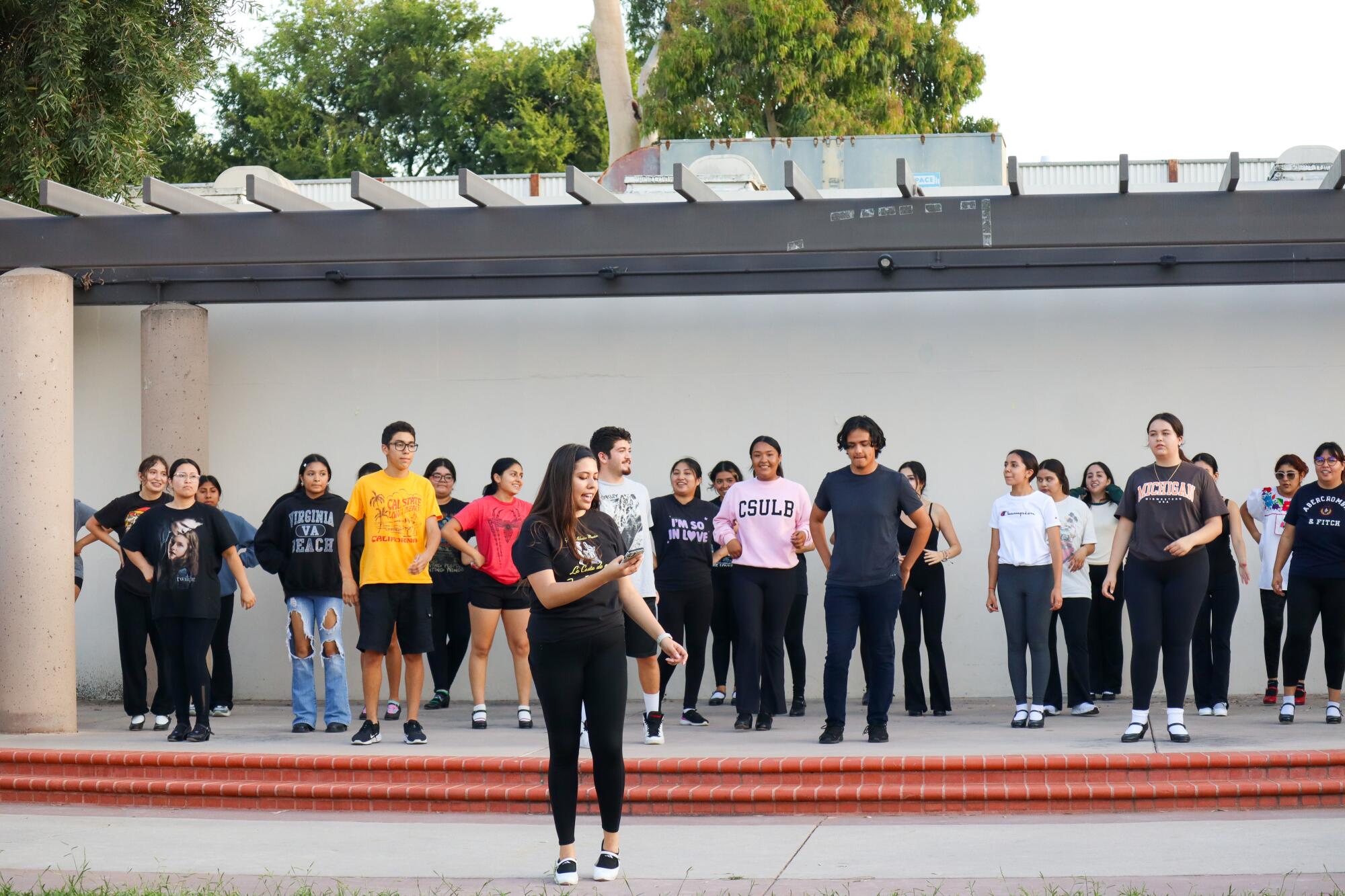
That sense of belonging and building community in a space that celebrates cultures is what attracted Marisol Novo to Grupo Folklórico Mexica.
The Cal State Long Beach sophomore, who was born in Altadena, says dancing has always been a big part of her life. But as a first-generation Latina of Mexican and Cuban descent, she found herself trying to figure out who she wanted to be.
“My mentality was I need to find a community and really find somewhere I can dance, and not really worry about homework, not worry about family problems, relationship problems,” said Novo, who now helps lead the folklórico group as vice president.
The East Los Angeles author chronicles the 14-year journey it took her to complete her novel ‘Huizache Women.’
Navigating higher education as first- or second-generation college students can come with feelings of pressure and imposter syndrome. Eufemio Fernandez, ethnic and Chicanx/Latinx studies professor at Fullerton College, says clubs like Grupo Folklórico Mexica are providing students with that familiarity and connection they need to feel like they belong.
“Clubs are reinforcing what we already know and are creating a camaraderie, reaching out to others and creating positive stereotypes,” Fernandez said.
But for some, finding community can feel like a battle between blending in and embracing who they are.
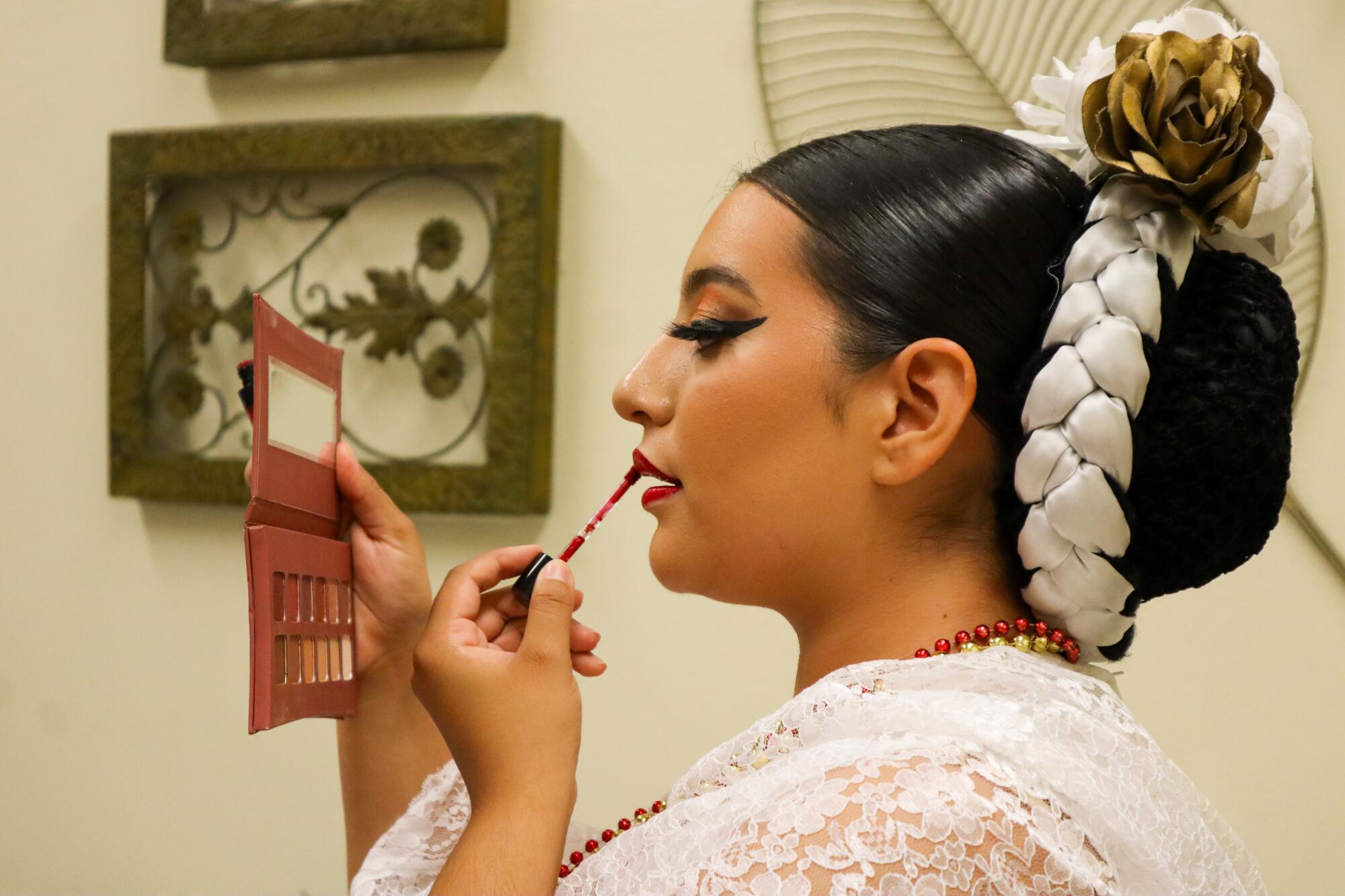
That was the experience for Alejandra Yamile Veliz Ruan, who moved to the U.S. from Yahualica de Gonzalez Gallo, Mexico, at age 4. Ruan started dancing when she was about 8 but quit because she noticed kids around her were doing more “American” things.
“I just wanted to fit in more,” said Ruan. “It wasn’t that anyone told me anything, but in my mind no one else was doing it. So why am I doing it?”
Latinidad can be expressed in multiple ways, and these Latinx entrepreneurs are using their nail art businesses to showcase their culture.
Fernandez says this experience is common for children who don’t see enough examples of representation and cultural appreciation around them. He says having an education that includes positive influences about your heritage is linked to the emotions one has about their culture. But while most learn about traditions and heritage at home, Fernandez says many are not exposed to the overall history of Latinos until they’re in college.
“When you are a young Latino and you are not reading about the great contributions we have made to this country, you can’t help but feel negative. If you are not reading about positive things, how can you feel positive about who you are or your history?” Fernandez said.
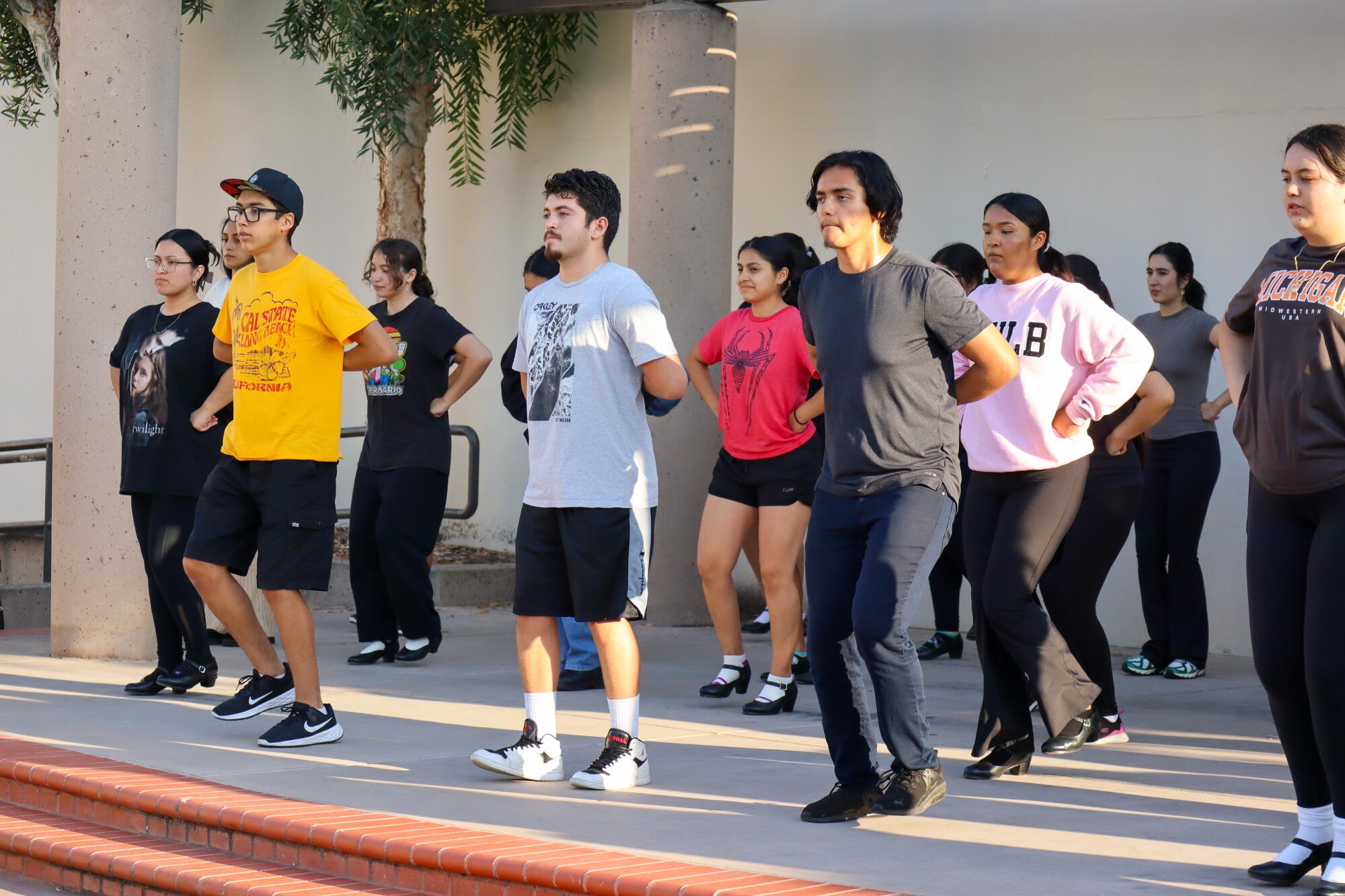
It took some time, but Ruan learned to appreciate her culture. As soon as she arrived at Cal State Long Beach, she joined Grupo Folklórico Mexica. These days, she doesn’t seek approval from anyone to dance or be herself.
“Our communities are beautiful, our culture is so beautiful. We should embrace that, we shouldn’t feel ashamed or let anyone tell us that who we are is wrong. Or that we don’t belong in this country,” she said.
Ordaz agrees. For her, being a part of a group that unites and connects new generations with their roots through baile folklórico feels like an achievement.
“My ultimate goal is for them to feel proud of who they are,” Ordaz said. “To be proud to be a dancer, to be proud to be Mexicanos, to preserve the culture, and never let it go extinct.”
Natalie Hernandez is a Los Angeles native, proud first-generation Latina and first-gen college student at Cal State Long Beach. She writes for DIG en Español and was previously the sports editor at Chimes newspaper.
More to Read
About this story
The Latinx experience chronicled
Get the Latinx Files newsletter for stories that capture the multitudes within our communities.
You may occasionally receive promotional content from the Los Angeles Times.
